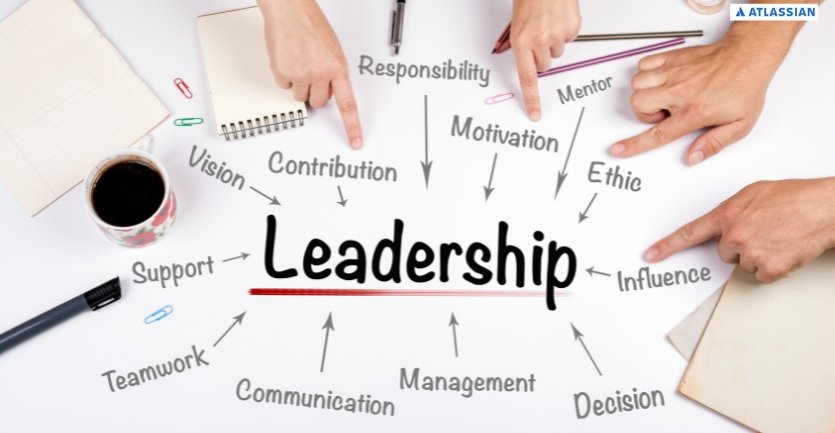The traditional role of the “boss”-the directive, command-and-control manager-is quickly becoming obsolete. In today’s volatile, uncertain, and complex world of work, a new model of Leadership in workplaces is taking center stage: the leader as coach.
This shift is not a mere trend; it’s a fundamental change in how organizations unlock potential, drive innovation, and foster a thriving culture.
The Sunset of Command-and-Control
For decades, the standard managerial approach emphasized hierarchy, strict compliance, and top-down decision-making. This style, often transactional, focused primarily on task execution and adherence to pre-set metrics.
However, this model falls short in a knowledge-based economy where problems are rarely simple and agility is key.
- Traditional Management: Leaders acted as directors, telling employees what to do and how to do it.
- The Limitation: This approach limits employee ownership, stifles creative problem-solving, and often leads to disengagement.
The modern employee, especially those from younger generations, seeks more than just a paycheck; they want purpose and progress. They demand a sense of ownership over their work and their career trajectory.
The Rise of the Coach-Leader
The coaching leadership style marks a decisive move toward human-centered management. A coach-leader’s primary function is not to solve problems for their team, but to guide the team members to discover their own best solutions.
This supportive, empowering approach is rooted in developing an employee’s long-term capabilities and potential. It’s less about enforcement and more about empowerment.
Core Behaviours of a Coaching Leader
The shift from manager to coach requires a change in mindset and the adoption of specific, intentional behaviors.
- Asks Thoughtful Questions: Instead of giving answers, the coach-leader uses open-ended questions to stimulate critical thinking and self-reflection.
- Practices Active Listening: They give their full attention, listening to understand, not just to respond. This builds the trust necessary for psychological safety.
- Empowers Ownership: They delegate not just tasks, but genuine responsibility, encouraging individuals to solve problems independently.
- Provides Growth-Oriented Feedback: Feedback focuses on future improvement (often called ‘feedforward’) and specific behaviours, rather than just critiquing past results.
Data and Impact: Why the Shift Works
The benefits of adopting a coaching style are well-documented in workplace surveys and research, demonstrating a clear link to improved organizational health and performance.
Related Posts
Enhanced Performance and Engagement
Research has consistently shown that coaching leadership has a significant positive impact on in-role performance.
- Self-Confidence Boost: Studies indicate that a high percentage of employees who receive coaching report an increase in their self-confidence, which directly translates to better decision-making.
- Improved Skills: A tailored coaching approach is linked to substantial gains in employee skill development, improving competence across the organization.
- Measurable Results: Around 70% of coached employees show notable improvement in critical areas such as work performance, interpersonal relationships, and communication skills.
This commitment to employee development acts as a powerful lever for employer branding and talent retention. People are drawn to-and stay with-organizations that invest in their individual growth.
Fostering an Agile and Resilient Culture
In today’s fast-moving markets, organizations must be adaptable. A coaching culture promotes the agility required to navigate constant change.
- Decentralized Problem Solving: When employees are coached to think critically, they can adapt and take ownership of results without waiting for top-down approval.
- Resilience Building: Coaching encourages employees to view challenges as learning opportunities, fostering a growth mindset that helps teams recover faster from setbacks.
- Psychological Safety: When leaders actively listen and empower, they create an environment where team members feel safe to share new ideas and take necessary risks, leading to greater innovation.
Making the Transition: A Path to Certification
The change from a directive manager to a supportive coach is a significant undertaking that requires intentional development. Organizations serious about this shift are investing in formal training and certification programs for their leaders.
Here are concrete steps for leaders and organizations to successfully make this transition:
- Invest in Training: Implement structured coaching programs that focus on skills like active listening, asking powerful questions, and applying frameworks like T-GROW (Topic, Goal, Reality, Options, Way Forward).
- Measure New Behaviours: Include coaching effectiveness metrics in leadership performance reviews. This sends a clear signal that the new style is a company priority.
- Gather Feedback: Utilize workplace surveys and 360-degree feedback tools to assess how well managers are being perceived as coaches by their teams. Feedback should measure approachability and supportive behaviours, not just task completion.
- Champion Emotional Intelligence (EQ): Coaching success is inextricably linked to EQ. Training should prioritize self-awareness, empathy, and the ability to manage complex team dynamics.
The evolution of leadership is a reflection of the evolving nature of work itself. By shifting
How Leadership Styles Are Evolving from directing tasks to developing people, organizations create a sustainable advantage.
They are not just managing an incredible workforce; they are cultivating one.









